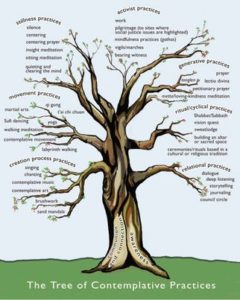Improve Eating Disorders with Yoga
By John M. de Castro, Ph.D.
“One of the biggest ways yoga helped me heal from anorexia was the release it provided me. I had stored so much in my body, so much pain and sadness, that often when I practiced yoga I would sob. I wouldn’t know where the tears were coming from, which used to scare me, but eventually I realized I was softening my grip. I was letting go of who I was in order to become who I am.” – Jennifer Pastiloff
Around 30 million people in the United States of all ages and genders suffer from an eating disorder; either anorexia nervosa, bulimia, or binge eating disorder. 95% of those who have eating disorders are between the ages of 12 and 26. Eating disorders are not just troubling psychological problems, they can be deadly, having the highest mortality rate of any mental illness. Anorexia Nervosa is particular troubling as it is often fatal as sufferers literally starve themselves to death. It occurs in about 1% to 4% of women in the U.S. Indeed, the mortality rate associated with anorexia nervosa is 12 times higher than the death rate associated with all causes of death for females 15-24 years old.
Binge eating disorder (BED) is characterized by the initiation of eating frequently in wildly excessive amounts. It is called disinhibited eating as there appears to be no restraints (inhibitions) that stop food intake. Once eating starts it goes on without anything holding it back. “Binge eating disorder is the most common eating disorder in the United States, affecting 3.5% of women, 2% of men, and up to 1.6% of adolescents.” – National Eating Disorders Association. Bulimia Nervosa is characterized by a cycle of binge eating followed by some form of purge, often induced vomiting. It is estimated that up to 4% of females in the United States will have bulimia during their lifetime. Tragically around 4% of the sufferers will die.
Disordered eating is difficult to deal with in part because it is frequently paired with other disorders. In fact, around 50% of people with eating disorders meet the criteria for clinical depression. They are also frequently accompanied by anxiety and body image disturbance Eating disorders are also difficult to treat because eating is necessary and cannot be simply stopped as in smoking cessation or abstaining from drugs or alcohol. One must learn to eat appropriately not stop. So, it is important to find methods that can help prevent and treat eating disorders. Contemplative practices, mindfulness, and mindful eating have shown promise for treating eating disorders. In addition, yoga practice appears to be beneficial.
In today’s Research News article “Use of yoga in outpatient eating disorder treatment: a pilot study.” See summary below or view the full text of the study at:
https://www.ncbi.nlm.nih.gov/pmc/articles/PMC5148831/
Hall and colleagues recruited adolescent girls, aged 11-18 years, who were diagnosed with an eating disorder, either anorexia, bulimia, avoidant restrictive food intake disorder, or other specified feeding or eating disorder and received medical monitoring, nutritional counseling and social work intervention. They attended 6-10 weekly 60 to 90-minute yoga classes in addition to their usual treatment. They were measured before and after training for depression, anxiety, anorexia, and symptoms of eating disorders.
They found that participation in yoga produced a reduction in anorexia, depression, and anxiety. There were also significant decreases in weight concern and shape concern. Hence, participation in yoga appeared to have significant benefits for adolescent girls with eating disorders reducing body image concerns, improving mood, and reducing restrictive dieting. Yoga appears to be capable of reducing anxiety and depression in college students who do not have an eating disorder. So, the results simply extend these findings to eating disordered adolescent girls. Many girls with eating disorders engage in vigorous exercise to help control weight. It is possible that yoga practice was an effective substitute exercise.
It should be pointed out that this was a pilot study that did not have a control condition. So, it cannot be concluded that participation in yoga caused the observed changes, as a number of confounding factors such as participant expectancy effects, experimenter bias, spontaneous remission, attention effects, etc. could have been responsible for the effects. So, although promising, more rigorous research is needed to draw firm conclusions. The results, however, suggest that yoga may be a useful adjunctive treatment for adolescent girls with eating disorders.
“Yoga is not a magic wand or an instant fix, but the practice consists of tiny changes which together will not in itself alter your life, but can alter your attitude to life, the tools you use to cope with difficult situations, the approach you take to daily activities, and thus, in all of this, be life changing.” – Francesca Baker
CMCS – Center for Mindfulness and Contemplative Studies
This and other Contemplative Studies posts are also available on Google+ https://plus.google.com/106784388191201299496/posts and Twitter @MindfulResearch
Study Summary
Hall, A., Ofei-Tenkorang, N. A., Machan, J. T., & Gordon, C. M. (2016). Use of yoga in outpatient eating disorder treatment: a pilot study. Journal of Eating Disorders, 4, 38. http://doi.org/10.1186/s40337-016-0130-2
Abstract
Background
Individuals with restrictive eating disorders present with co-morbid psychiatric disorders and many attempt to control symptoms using strenuous exercises that increase caloric expenditure. Yoga offers a safe avenue for the engagement in physical activity while providing an outlet for disease-associated symptoms. This study sought to examine use of yoga practice in an outpatient setting and its impact on anxiety, depression and body image disturbance in adolescents with eating disorders.
Methods
Twenty adolescent girls were recruited from an urban eating disorders clinic who participated in weekly yoga classes at a local studio, in addition to standard multidisciplinary care. Yoga instructors underwent training regarding this patient population. Participants completed questionnaires focused on anxiety, depression and body image disturbance prior to the first class, and following completion of 6 and 12 classes.
Results
In participants who completed the study, a statistically significant decrease in anxiety, depression, and body image disturbance was seen, including: Spielberger State anxiety mean scores decreased after the completion of 7–12 yoga classes [47 (95%CI 42–52) to 42 (95%CI 37–47), adj. p = 0.0316]; as did the anorexia nervosa scale [10 (95% CI 7–12) vs. 6 (95%CI 4–8), adj. p = .0004], scores on Beck depression scales [18 (95%CI 15–22) to 10 (95%CI 6–14), adj. p = .0001], and weight and shape concern scores [16 (95%CI 12–20) to 12 (95%CI 8–16), adj. p =0.0120] and [31 (95%CI 25–37) to 20 (95%CI 13–27), adj. p = 0.0034], respectively. No significant changes in body mass index were seen throughout the trial.
Conclusions
Yoga practice combined with outpatient eating disorder treatment were shown to decrease anxiety, depression, and body image disturbance without negatively impacting weight. These preliminary results suggest yoga to be a promising adjunct treatment strategy, along with standard multidisciplinary care. However, whether yoga should be endorsed as a standard component of outpatient eating disorder treatment merits further study.









